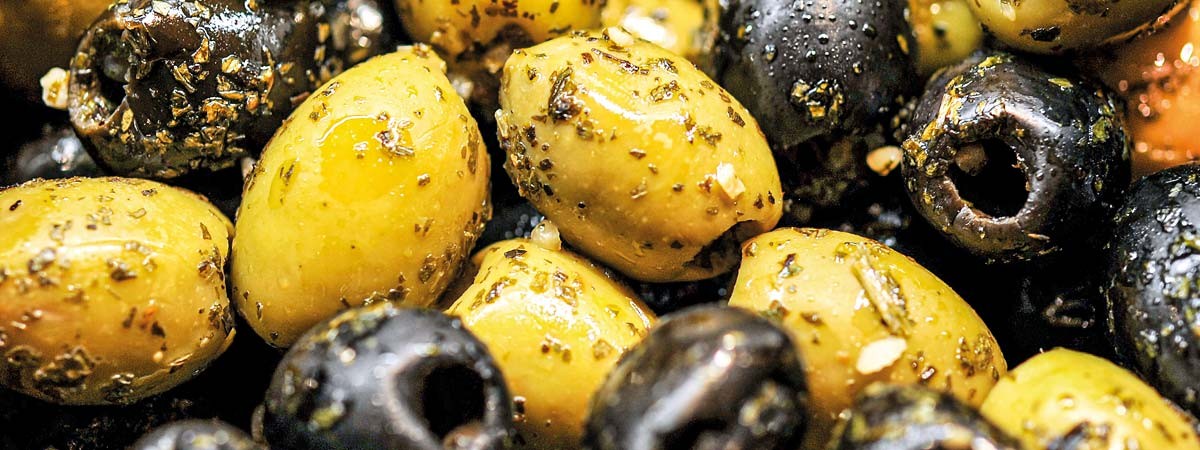Olives take a lot of time and effort before they arrive on the plate. Straight from the tree, they contain a bitter chemical compound called oleuropein and go through a lengthy curing process – essentially pickling them – before they reach the familiar salty, sweet-but-bitter taste olive fans love. And in two other stages in their journey to becoming delicious antipasti, olives may meet a vacuum system: when being plucked from the tree, and when they are placed into their final packaging.

From Tree to Picnic Blanket
Antipasti picked and packaged with vacuum
What would a summer picnic be without some fancy appetizers? Whether green or black, in oil or brine, stoned or filled, olives are one such delicacy that has vacuum in its story from harvest to packet – and in these processes, vacuum pumps from Busch are used.
Olives take a lot of time and effort before they arrive on the plate. Straight from the tree, they contain a bitter chemical compound called oleuropein and go through a lengthy curing process – essentially pickling them – before they reach the familiar salty, sweet-but-bitter taste olive fans love. And in two other stages in their journey to becoming delicious antipasti, olives may meet a vacuum system: when being plucked from the tree, and when they are placed into their final packaging.
Olives take a lot of time and effort before they arrive on the plate. Straight from the tree, they contain a bitter chemical compound called oleuropein and go through a lengthy curing process – essentially pickling them – before they reach the familiar salty, sweet-but-bitter taste olive fans love. And in two other stages in their journey to becoming delicious antipasti, olives may meet a vacuum system: when being plucked from the tree, and when they are placed into their final packaging.
5000-year-old sisters
Olive oil has been produced around the Mediterranean for the last 6,000 to 8,000 years, although at first, no one was using it for food. Originally, it was used in religious ceremonies and as lamp fuel, and was even burned in the original Olympic torch. But it is not just the recipe for the oil that has persisted throughout history. Amazingly, olive trees can have such a long lifespan that trees used to press some of the first oil may still be alive today. And they are not just surviving but thriving. The Sisters, a grove of 16 olive trees in Bchaaleh, Lebanon, are said to be at least 5,000 years old – possibly even older – meaning that they could be the oldest living trees on the planet. Their growth pattern makes their exact age difficult to determine, but the trees are healthy and are still producing olives to this day.
Olive oil has been produced around the Mediterranean for the last 6,000 to 8,000 years, although at first, no one was using it for food. Originally, it was used in religious ceremonies and as lamp fuel, and was even burned in the original Olympic torch. But it is not just the recipe for the oil that has persisted throughout history. Amazingly, olive trees can have such a long lifespan that trees used to press some of the first oil may still be alive today. And they are not just surviving but thriving. The Sisters, a grove of 16 olive trees in Bchaaleh, Lebanon, are said to be at least 5,000 years old – possibly even older – meaning that they could be the oldest living trees on the planet. Their growth pattern makes their exact age difficult to determine, but the trees are healthy and are still producing olives to this day.